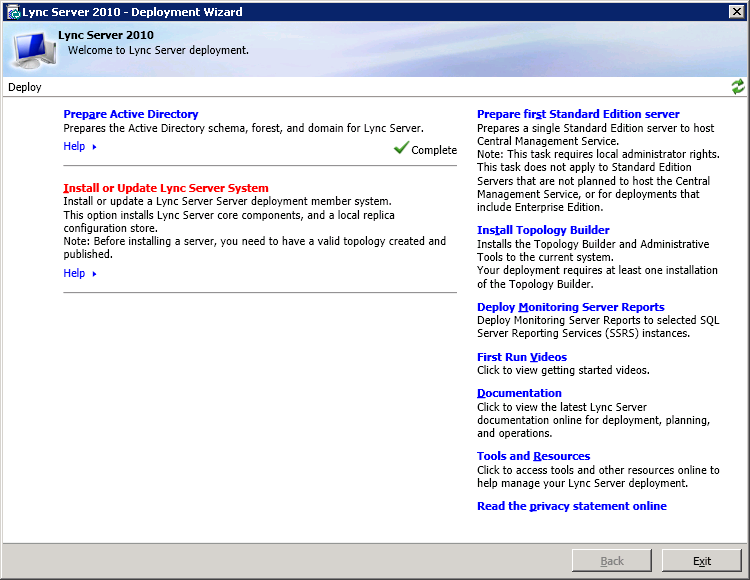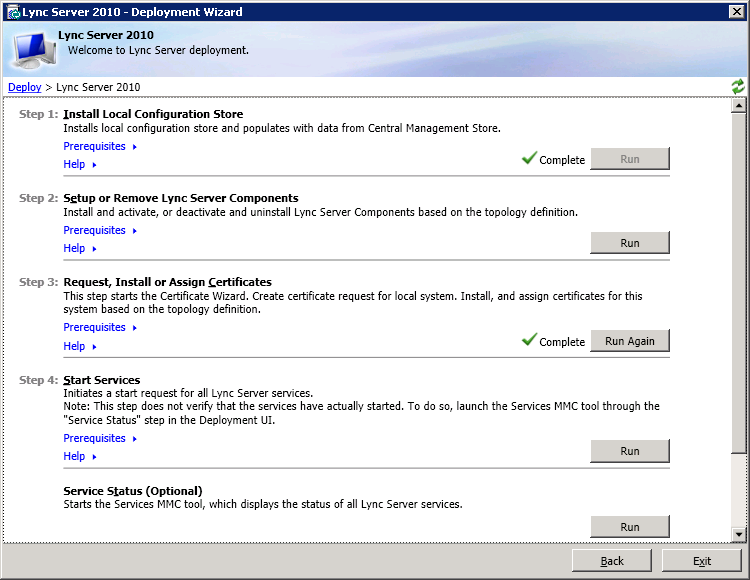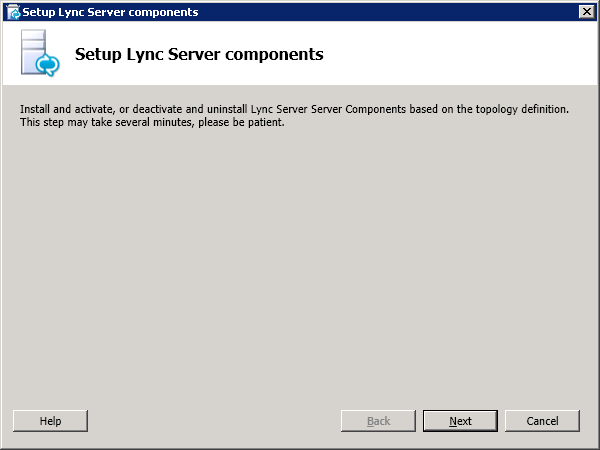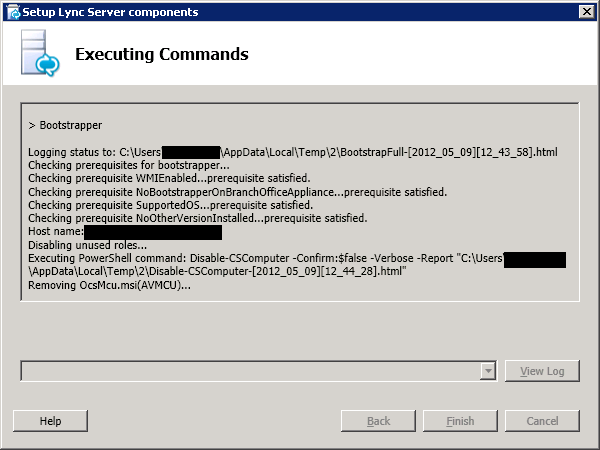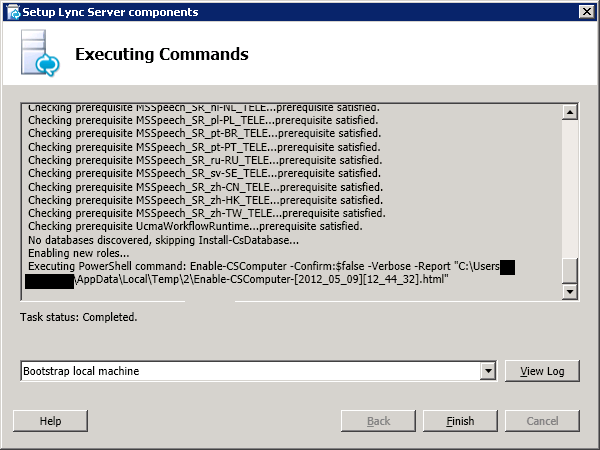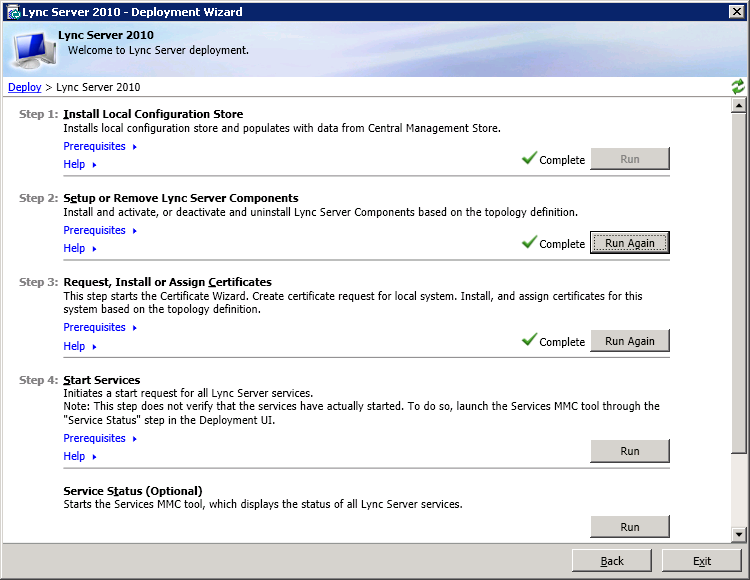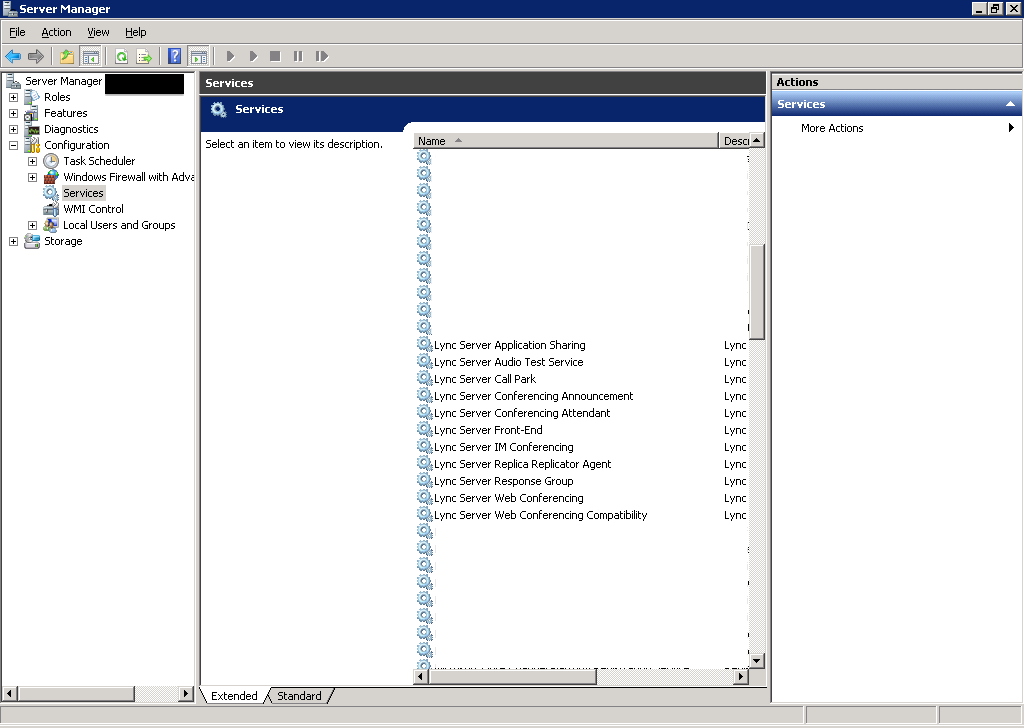Last month I deployed a new Lync 2010 environment with many regions/ pools globally coupled with multiple SIP domains of which we had to design a Meeting Join solution with simple URLs to accomodate the geographically dispersed nature. Let me set the scene.
The Problem
If we just had say, https://meet.contoso.com as our global meeting join URL (defined in the Lync Topology Builder) and pointed this to say, the EMEA Lync Front End pool, it would mean all users worldwide would be hitting that pool when they click the link in Outlook to join the meeting. Not ideal and not scalable.
The Solution
To ensure only EMEA users connect to the EMEA pool (and not the APAC users as well, for example), we need to create site level simple URLs to ensure users only connect to the pool in their region and that these URLs take precedence over the default global level simple URLs.
For this scenario, I selected Simple URL Naming Option 2 from the Planning for Simple URLs article on TechNet, which gives me a bit of flexibility and means my simple URLs for EMEA for this scenario look like this:
https://lyncemea.contoso.com/meet
https://lyncemea.fabrikam.com/meet
https://lyncemea.contoso.com/dialin
and my APAC URLs for example, would look like this:
https://lyncapac.contoso.com/meet
https://lyncapac.fabrikam.com/meet
https://lyncapac.contoso.com/dialin
and so on per global region. Note that you can only have one dialin simple URL per site – you can’t have a different dialin simple URL for each SIP domain.
For this article, I’ll only be covering the meet and dialin URLs, not the admin URL for LSCP access.
Creating a new Simple URL Configuration
First we need to create a new simple URL configuration that we will end up applying new simple URLs to.
- The first command we need to run is Get-CsSite. This cmdlet retrieves the list of Lync sites in the topology.
- After we’ve identified the site name (EMEA), we run the New-CsSimpleUrlConfiguration cmdlet against the site e.g.
New-CsSimpleUrlConfiguration -Identity site:EMEA
Creating new Simple URLs
After we’ve created the new Simple URL configuration, we need to first create simple URL entries bound to a variable in our current PowerShell session and then simple URLs bound to a different variable.
Simple URL Entries
We run the following cmdlets to create a new simple URL entry for each URL required and then bind it to the variable specified at the start of the cmdlet.
$urlEntryContosoMeet = New-CsSimpleUrlEntry -url “https://lyncemea.contoso.com/meet”
$urlEntryFabrikamMeet = New-CsSimpleUrlEntry -url “https://lyncemea.fabrikam.com/meet”
$urlEntryAllDialIn = New-CsSimpleUrlEntry -url “https://lyncemea.contoso.com/dialin”
Simple URLs
Next, we need to actually create the new simple URL in Lync, set which component (meet or dialin) it will apply to, which SIP domain it’s set for, which simple URL entry it will use and then (phew!) bind it to the variable we specify at the start of the cmdlet. Run each cmdlet per simple URL you need to create:
$simpleURLContosoMeet = New-CsSimpleUrl -Component meet -Domain contoso.com -ActiveUrl https://lyncemea.contoso.com/meet -simpleurl $urlEntryContosoMeet
$simpleURLFabrikamMeet = New-CsSimpleUrl -Component meet -Domain fabrikam.com –ActiveUrl https://lyncemea.fabrikam.com/meet -simpleurl $urlEntryFabrikamMeet
$simpleURLAllDialIn = New-CsSimpleUrl -Component dialin -Domain * -ActiveUrl https://lyncemea.contoso.com/dialin -simpleurl $urlEntryAllDialIn
Bringing it all together
So now we have a bunch of variables floating around in our current PowerShell session, we need to apply them to something. To make it real, we need to add the variables of all our simple URLs from the previous step to the new site level simple URL configuration we created earlier by running this cmdlet:
Set-CsSimpleUrlConfiguration -Identity “site:EMEA” -SimpleUrl @{Add=$simpleURLContosoMeet,$simpleURLFabrikamMeet,$simpleURLAllDialIn}
Once that’s applied successfully, we need to run Enable-CsComputer to apply the configuration to IIS on the Front End server/s in the pool.
To review the changes committed, run the cmdlet Get-CsSimpleUrlConfiguration to retrieve the Global Simple URL configuration and the new Site level Simple URL configuration, each with the individual URLs we created.
Last Words
Make sure you take note of the difference between a Simple URL entry and a Simple URL, as they are different things in Lync Server Management Shell that are brought together to create a configuration.
To reiterate, note that you can only have one dialin simple URL per site – you can’t have a different dialin simple URL for each SIP domain.
Hope this makes it (a bit) clear on how to setup site specific simple URLs in Lync. As Lync grows in maturity and market share, we will see larger, more widespread organisations adopting it which means you’ll need to know how to get this kind of configuration going. 🙂

